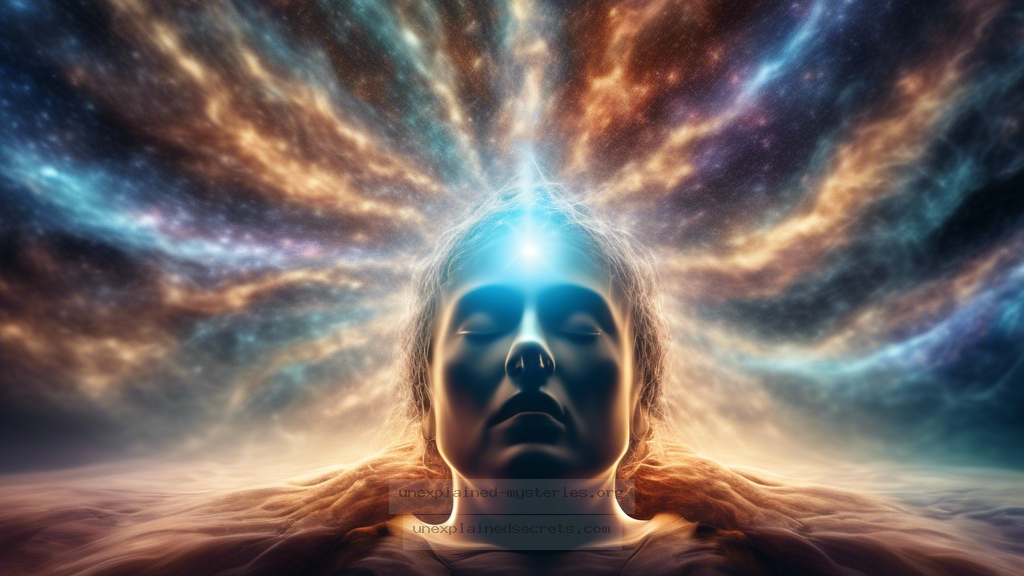Can Near-Death Experiences Reveal Insights About Consciousness After Clinical Death?
Can Near-Death Experiences Reveal Insights About Consciousness After Clinical Death?
The phenomenon of Near-Death Experiences (NDEs) has captivated the interest of scientists, philosophers, and spiritual seekers alike. These experiences often occur during moments of clinical death, leading many to wonder about the nature of consciousness and what happens to our awareness when we are on the brink of death. This question is not just academic; it touches the core of human existence, belief systems, and the understanding of life beyond physicality. In this blog post, we will delve into the complexities of NDEs, exploring documented cases, scientific research, and the implications on our understanding of consciousness.
Historical Context of Near-Death Experiences
Near-Death Experiences have been reported throughout history, with accounts tracing back to ancient civilizations. The term “Near-Death Experience” was popularized in the 1970s by Dr. Raymond Moody in his groundbreaking book, “Life After Life.” Moody documented various accounts that included similar themes: a sense of peace, an out-of-body experience, and encounters with deceased loved ones or spiritual beings. These themes have persisted across cultures and epochs, suggesting a universal aspect to NDEs that transcends time and geography.
In many ancient cultures, such as the Egyptians and Greeks, death was seen not as an end but a transition to another realm. The Book of the Dead, for example, provided a guide for the deceased to navigate the afterlife. Fast forward to modern times, and medical literature has begun to document these experiences more rigorously, leading to an increased interest in the scientific exploration of consciousness and its potential continuity after death.
Core Concepts of Near-Death Experiences
NDEs typically include a variety of components, which may vary among individuals. However, several core elements are frequently reported:
- Out-of-body experiences: Many individuals report a sensation of floating above their physical bodies, often observing medical personnel attempting to revive them.
- Tunnel experience: A common feature is the sensation of moving through a tunnel toward a bright light.
- Life review: Some individuals experience a panoramic life review, where they relive significant moments of their life.
- Feelings of peace: A profound sense of tranquility and love is often reported, contrasting sharply with the fear typically associated with dying.
- Encounters with beings: Many report meeting deceased relatives, spiritual guides, or even religious figures.
Scientific Research Surrounding NDEs
Despite their prevalence, NDEs remain a controversial topic in scientific circles. Researchers like Dr. Pim van Lommel and Dr. Bruce Greyson have conducted studies that suggest a correlation between NDEs and altered states of consciousness. Van Lommel’s research, in particular, involved a longitudinal study of survivors of cardiac arrest. He found that many individuals reported profound NDEs, leading him to propose that consciousness may exist independently of the brain.
Furthermore, a study published in the journal “Resuscitation” in 2014 explored the cognitive processes that occur during cardiac arrest and found that some patients retained awareness even when clinically dead. This has significant implications for how we understand consciousness, suggesting that it may not be solely a product of brain activity.
Practical Implications of NDEs
The implications of NDEs extend beyond personal experience; they challenge the prevailing notions of consciousness and the afterlife. For many, these experiences can lead to profound changes in worldview, often resulting in reduced fear of death and an increased appreciation for life. This shift can have therapeutic benefits, as individuals may feel more inclined to seek meaning and pursue relationships post-NDE.
Moreover, the consistency of reports across demographics provides a compelling argument for re-evaluating our understanding of consciousness. If a significant percentage of people report similar experiences during moments of clinical death, it raises questions about the nature of reality and existence itself.
Alternative Perspectives on NDEs
While many endorse the idea that NDEs offer glimpses into an afterlife or higher dimensions of consciousness, skeptics argue that these experiences can be explained through physiological and psychological phenomena. Some suggest that NDEs might result from a lack of oxygen, anoxia, or the brain’s attempts to cope with trauma. These theories propose that the experiences are not evidence of an afterlife but rather a natural response to extreme stress.
Additionally, cultural factors can influence how individuals interpret their NDEs. For instance, someone from a religious background may interpret their experience through the lens of their faith, while someone with a secular outlook may perceive it as a purely neurological event. This subjectivity further complicates the understanding of NDEs.
Common Misconceptions About NDEs
There are several misconceptions surrounding NDEs that warrant clarification:
- All NDEs are positive: While many report blissful experiences, some individuals describe negative NDEs, characterized by feelings of fear or despair.
- NDEs are universal: Not everyone experiences NDEs during clinical death, and the phenomenon is often culturally shaped.
- NDEs prove the existence of an afterlife: While compelling, NDEs do not constitute definitive proof of life after death; they are subjective experiences subject to interpretation.
Best Practices for Investigating NDEs
For those intrigued by NDEs, whether from a scientific, philosophical, or spiritual perspective, approaching the subject with an open and critical mindset is essential. Here are some best practices for investigation:
- Review existing literature: Familiarize yourself with both anecdotal accounts and scientific studies surrounding NDEs.
- Engage with firsthand accounts: Listening to or reading personal NDE testimonies can provide valuable insights.
- Consider cultural context: Understand how cultural beliefs shape NDE narratives and interpretations.
- Encourage dialogue: Discussions with professionals in psychology, neuroscience, and theology can broaden your understanding of the topic.
- Remain skeptical yet open-minded: Balance skepticism with openness to new ideas and experiences.
Future Developments and Ongoing Research
The exploration of NDEs is still in its infancy, with ongoing research promising to shed more light on this enigmatic phenomenon. Advances in neuroscience, particularly concerning consciousness, are likely to play a crucial role. For instance, studies utilizing neuroimaging techniques aim to understand the brain’s activity during near-death situations better.
Additionally, interdisciplinary collaborations between scientists, medical professionals, and spiritual leaders may provide a more holistic approach to understanding NDEs. Such collaborations could help bridge the gap between empirical evidence and personal experience, creating a comprehensive framework for investigating the mysteries surrounding consciousness and the afterlife.
Conclusion: What Do NDEs Mean for Our Understanding of Consciousness?
Near-Death Experiences challenge our conventional views on consciousness, life, and death. The consistent reports of similar experiences across cultures, coupled with emerging scientific research, suggest that NDEs could provide profound insights into the nature of existence beyond the physical realm. While the interpretations of these experiences may vary, they provoke essential questions about the continuity of consciousness and what lies beyond our current understanding. As researchers continue to explore this fascinating realm, the ongoing dialogue between science and spirituality may illuminate the mysteries of human consciousness in ways we have yet to imagine.
Other Articles
Recent Posts
- What Happened to Flight MH370? The Conspiracy Theories That Still Haunt Us
- What Secrets Lurk Within the Walls of the Infamous Trans-Allegheny Lunatic Asylum?
- What Evidence Supports the Existence of Bigfoot in the Pacific Northwest?
- What Happened to the Indus Valley Civilization? Unraveling the Mysteries of Ancient Urban Life
- Can Telepathy Be Scientifically Proven Through Laboratory Evidence?







